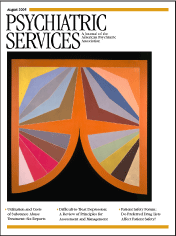The Pursuit of Perfection: The Promise and Perils of Medical Enhancement
I was pleasantly surprised when this work by Sheila M. Rothman and David J. Rothman arrived in the mail for my perusal. Back in my college years, I took a course from David Rothman called "Medicine and Civilization," which was thoroughly enjoyable. I was therefore eager to see the ideas that he and his wife had explored since then, and The Pursuit of Perfection: The Promise and Perils of Medical Enhancement did not disappoint. It offers a thoughtful historical view into the world of medical research involving conditions that not everyone agrees are pathological.
Focusing on the birth of estrogen and testosterone therapy for female and male menopause, growth hormone for short stature, and plastic surgery, the Rothmans take us on a thought-provoking tour of the various social, political, medical, and economic factors that shaped the evolution of these treatments and up to their present-day appeal. In doing so, they force us to question whether the science behind these treatments is actually sound or whether market forces are producing medical interventions that are more dangerous than has been revealed.
The authors also call forth the question of whether conditions such as menopause and short stature should be considered as part of the norm within the human experience or whether the current public pressure to see them as pathological states has started us down the slippery slope to seeing every imperfection as an illness that should be medically reversed. The last chapter begins to explore the ramifications of this idea in the currently popular area of genetic research. Where does medical treatment leave off, and medical enhancement begin, and is the funding for one as justified as it is for the other? These are weighty questions, and the Rothmans explore them in their usual clear and eminently readable prose.
Although these are important and interesting questions, I found the most fascinating part of this book to be the description of how pharmaceutical companies themselves can, through careful marketing, influence the demand and therefore the funding for particular areas of research. In this era of ever-increasing drug costs, controversies around the importation of Canadian drugs, and flu vaccine shortages, I thought this issue to be most timely. This book is not a guide for clinicians but, rather, an eye-opening look at where the future of medical research may be headed and why. Anyone who is concerned about why treatment for some conditions is actively researched while other conditions are ignored will find this text illuminating.
Dr. Goldman is affiliated with the department of psychiatry of University Hospitals of Cleveland in Ohio.



